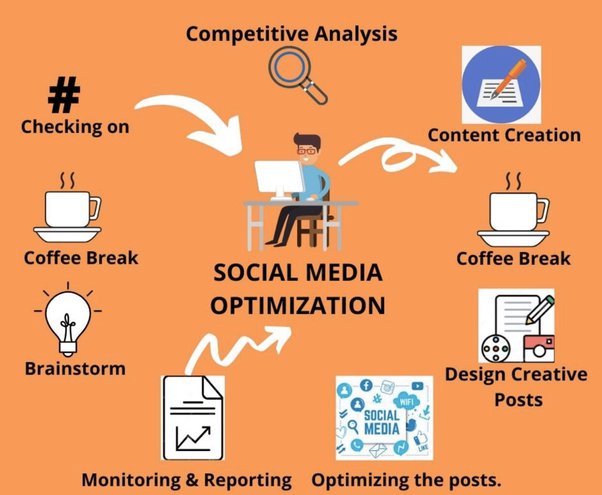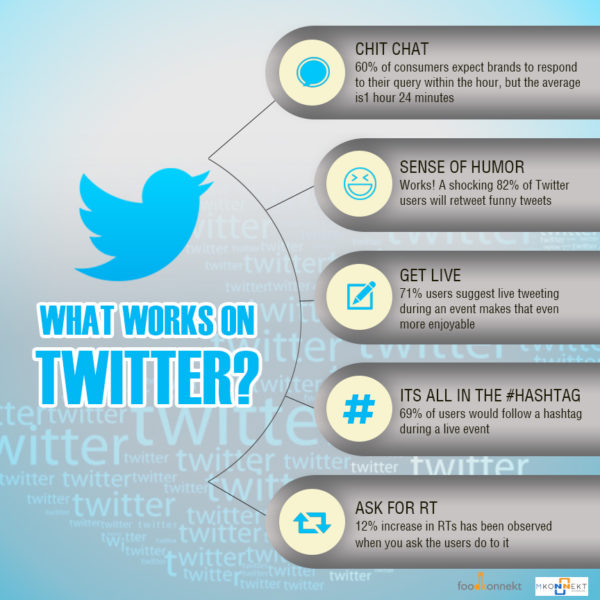
You have probably heard the phrase 'cost per click' in relation to influencer marketing. You may be wondering what KPI is and how you can measure it. KPI, or key performance indicators, are a way to gauge how well your message is reaching your target audience. These metrics will help you reach more people, and make your business more profitable. Here are some examples of how to use KPIs for influencer marketing. And be sure to check out our case study!
Cost per click
Your primary focus should be on the click-through rates (CTR) as well as the cost-per–click when evaluating the effectiveness and efficiency of your influencer marketing campaign. CTR defines the cost of each click and CPC the conversion rate. To calculate your CTR, multiply your total cost with the number of clicks. Engagement measures how many people click on your post. Social Reach measures the influencers that could be reached by a campaign.
It is important to measure earned media worth after measuring ROI. This can be measured using a number of metrics, such as page views, daily unique visitors, or comments on posts on social media. According to Influencer marketing hub, each dollar spent on influencer advertising can net you 18 cents in earned media value. To maximize earned media value for your campaign, track it using KPIs or metrics.
Influencers contribute content
Implementing influencer marketing strategies requires you to be aware of several key KPIs. In order to determine the effectiveness of your influencer strategy marketing strategy, it is important to use the number engagements to measure its success. Engagement measures the interaction with and level of activity generated by influencers. This metric is more difficult than engagement and reach but can help you evaluate the effectiveness of your influencer marketing efforts.

It is important to measure the quality of an influencer's traffic by determining how many retweets and likes they have. The number and quality of your influencer marketing strategies' referrals is an important metric. The more people that use the hashtag associated with an influencer's content, the more potential customers the brand has to reach.
Conversion rates
KPIs can be tracked in influencer marketing by simply dividing the amount generated by the campaign's session by the total number. Some KPIs are easily tracked in Google Console and App Store Connect. Others must be calculated using influencer statistics. You must measure the influencer marketing's effectiveness by analyzing the revenue generated from each lead. To do this, you must consider the overall reach of the campaign, as well as the engagement rate of each user.
The click-through ration (CTR), which is a measure of the number people who click on a link within a social network post, is another important engagement measurement. CTR can be used to measure the effectiveness of influencer-marketing campaigns. It gives you an indication of how many people are clicking on your links. To calculate your CTR, divide the total number of links clicked by the total reach of an influencer's post. Multiply this number by 100. Your influencers' effectiveness will increase if your CTR is higher.
Engagement
This is one of the most important KPIs that you should track. The number of followers a user has is a good indicator of engagement. Divide the number and total number followers by the interactions a user has had with the brand to calculate the engagement rate. Multiply the result by 100 to get an average engagement rate. The better the engagement rate is, the higher it will be. You may have to rethink the way you approach your campaign if it isn't performing.

Engagement can be described as the degree to which a post is being received well by its audience. It also indicates the relationship between an influencer and their followers. If the engagement rate for your post is low, this could mean that you and the influencer are not compatible. It's also possible that the influencers you're working with are fake and have acquired their followers through follow-for-follow tactics.
FAQ
How can I improve my content-marketing strategy?
You can improve your content marketing strategy by focusing on audience, content, and distribution. First, you need to understand your ideal customer and where they hang out online. Once you know this information, you can tailor your content to appeal to them. The second step is to create a voice and style that differentiates you from the rest. Third, you must figure out how to efficiently distribute your content.
What are the 7 steps to content marketing?
The seven-step process for content marketing includes:
-
Identify the problem
-
Learn more about what's happening now
-
Create new ideas
-
Use them to create strategies
-
Test them
-
You can measure the results
-
Keep going with the same process until something works.
This approach has been proven to work well for businesses large and small.
Content marketing requires a large budget.
It all depends on how big your business is and where you are at. Small businesses often start without any dedicated resources. Once they start to grow, however, they soon realize how a solid content strategy can increase sales and improve customer engagement.
You'll have access to a variety of tools and expertise when you work with a freelance writer or content marketing agency. These professionals can help identify problems and opportunities within your organization to guide the development of your content marketing program.
A content marketing strategy that works will make you money while also allowing you to invest elsewhere in your business.
How many hours should I devote to content marketing each week?
It all depends on your circumstances. You may not need to spend any time at all on content marketing. Content marketing is not something you should do every day.
Why would you need a content strategy in marketing?
Content marketing does not mean creating high-quality content just for the sake. Instead, it's about engaging with people on an emotional level, helping them solve problems, and building relationships. This requires an in-depth understanding of online behavior.
And this is precisely what Content Marketing Strategy does. Content Marketing Strategy will help you to understand the psychology of your customers in order to best engage them.
It can also help increase your conversion rate to increase your profit.
However, there are plenty of options for content marketing strategies.
Content Marketing Strategy is far better than any other marketing type.
So whether you are looking to increase brand awareness or sell products, a well executed Content Marketing Strategy is the best way to go.
Can I just post links to other sites' content?
Yes! This is link building. It's a great way increase traffic to your site by linking to other sites. But only link to reliable sources.
How is content marketing different from traditional advertising?
While traditional advertising focuses on getting attention and content marketing on providing value, it is not as effective. Traditional advertising is often a waste because most people ignore them. You'll get much better engagement rates with content marketing.
Statistics
- According to our research, 65% of companies with very successful content marketing in 2021 ran content audits at least twice a year. (semrush.com)
- Measure your goals with a progress indicator of 0-100%. Make your goals collaborative and transparent (semrush.com)
- An example of an overarching goal could be: "In 2022, we want to achieve a 20% increase in revenue created by organic content and generate 15,000 MQLs with a budget of $30,000." (semrush.com)
- Content marketing produces 3X more leads per dollar spent. Content marketing costs 62% less than traditional marketing. (criteo.com)
- Out of the 1,500 marketers we surveyed for our State of Content Marketing report, 78% who felt their content marketing strategy was exceptionally effective in 2021 had documented their strategy. (semrush.com)
- We found that 40% of businesses don't have a documented strategy yet. (semrush.com)
- Seventy-two percent business to business (B2B) (mailchimp.com)
- According to the Content Marketing Institute, 70% of B2B marketers and 86% of B2C marketers surveyed use content marketing in some form or other. (criteo.com)
External Links
How To
Informationgraphic creation tips to help with content marketing
Infographics are an effective way to explain complicated concepts clearly and make information understandable. You should use infographics to spread the message about content marketing.
You'll need design software such as Adobe Illustrator or Photoshop to create an infographic. These programs allow you to create infographics by drawing different shapes and elements. You can then use colors and fonts for your data. Once you have your design ready, upload images from Unsplash or Pixabay to add to it.
Looking at other infographics online can help you get ideas. If you want to show calories in certain foods, then you can take a picture or diagram of a food pyramid, and add pictures of the foods. Or, you might choose to look up how much sugar is in soda pop and change that number to a picture of a bottle of Coke.
Once you've designed your infographic, you can share it through social media channels like Facebook and Twitter. This helps people who aren't familiar with the concept learn about it. You can include hashtags in your infographic if you want to share it on social media. You can use hashtags to allow others to follow your conversations about specific topics.
An infographic is a shorter version of a blog post. An average blog post is between 2000 and 5000 words, while an infographic takes 500 to 1000 words. You can communicate more information in less space.
Remember that not all viewers can read small font sizes when designing an infographic. It is important to use large fonts and avoid relying too heavily on colors when designing your infographic. Also, ensure all text is legible.
These are additional tips:
-
Choose an Infographic Template. You can find many templates online or in printed formats. The most popular ones include Canva, Piktochart, and Google Slides.
-
Create your Infographic. Use the template below to create your infographic. Any media you choose is acceptable for your audience. You might use photos of local restaurants to create an infographic about the best places in Seattle.
-
Add text. Add text once your infographic is created.
-
Add Images. Images can be added to your infographic. These images can include charts, graphs and icons. You should make sure that the picture you upload is related to your topic.
-
Make It Interactive. Interactive elements can include buttons, maps, or links. This will engage your audience.
-
Share. Share your infographic when you are done.
-
Measure. Do you know how well your infographic performed? Did people click through to your website? Did they signup for your mailing list? What was their reaction to your infographic?
-
Improve. Is there a way to improve your infographic? Do you think your infographic could be better?
-
Repeat. Repeat.